Imagine that 1 inch represents 1,000 years; so there are 12,000 years in 12 inches (a foot)
and 63,360,000 years in 63,360 inches (5,280 feet) in 1 mile
For example, 1 inch from today puts us back 1000 years to the year 1025- the dark ages in Europe.
We would need to walk over a mile (5416 feet) to see a dinosaur.
So sit down with a ruler at the long end of the dining room table, and see how time measures up...
| 0.00 inch 0 yrs |
The 6th great extinction. NOW!! The sixth great extinction, the Holocene (or Anthropocene), is happening now. Species are going extinct 100 to more than 1,000 times faster than at the normal background extinction rate, which is about 10 to 25 species per yr. |
| 0.00 inch 0 yrs |
World population: 8,300,000,000 |
| 0.08 inch 80 yrs |
Average human live span (80 years). About the thickness of a quarter on its end. |
| 0.20 inch 200 yrs |
World population: 1,000,000,000 |
| 0.25 inch 250 yrs |
America declared independence in 1776 (240 years ago). |
| 0.50 inch 500 yrs |
Finds us in the year 1516, the start of European human modernity. Just a few years after Columbus sailed to America and 50 years before Shakespeare was born. |
| 1.00 inch 500 yrs |
Puts us in the year 1016, the start of the the middle ages in Europe. 200 years before Marco Polo traveled from Europe to Asia. |
| 1.00 inch 500 yrs |
World population: 200,000,000 |
| 2 inches 2 Thou yrs |
Just 2 inches (2000 years ago) puts us near the start of the Roman empire. |
| 6 inches 6 Thou yrs |
Human "civilization". Cities, Laws, Shrines, Trading, Writing, Religion. (Mesopotamia, 4000-3500 B.C.) |
| 10 inches 10 Thou yrs |
Modern human civilization, with its permanent agriculture and settlements, has developed over just the past 10,000 years or so. The period has generally been one of moderate temperatures and relative global climate stability. Compared to most of Earth?s history, today is unusually cold; we now live in what geologists call an interglacial?a period between glaciations of an ice age. |
| 11.7 inches 11.7 Thou yrs |
JUST RIGHT! 11,700 years ago we leave the last glacial climate period into the current, stable, interglacial period. |
| 12 inches 12 Thou yrs |
The Younger Dryas, which occurred circa 12,900 to 11,700 years was a return to glacial conditions which temporarily reversed the gradual climatic warming. It's end signalled the start of the current interglacial period. The Younger Dryas is thought to have been caused primarily by significant reduction or shutdown of the North Atlantic "Conveyor" (AMOC) |
| 12 inches 12 Thou yrs |
12 inches puts us to at start of the agrarian phase of human development; we finally settle down from the nomadic life. The first actual human civilizations would come 6 inches later. But we already start making changes to the environment. All of the time we think of as "being human" fits on this 1 foot ruler on our dining room table |
| 73 inches 73 Thou yrs |
The supervolcano eruption of Mount Toba, which took place on the island of Sumatra in Indonesia about 73,000 years ago, released an estimated 800 cubic kilometers of ash into the atmosphere that blanketed the skies and blocked out sunlight for six years. By comparison, the infamous blast from the volcanic Indonesian island of Krakatoa in 1883, one of the largest eruptions in recorded history, released about 3 cubic miles (12 cubic km) of magma. In Toba's aftermath, global temperatures dropped by as much as 16 degrees centigrade (28 degrees Fahrenheit) and life on Earth plunged deeper into an ice age that lasted around 1,800 years. |
| 110 inches 110 Thou yrs |
glacial period start: Last glacial period |
| 135 inches 135 Thou yrs |
glacial period end: Penultimate Glacial Period |
| 16.2 feet 194 Thou yrs |
glacial period start: Penultimate Glacial Period |
| 26.3 feet 315 Thou yrs |
WOW! Actual humans - Homo Sapiens appear about 315,000 years back. That 26 feet is off the dining room table, and to the front door. We are 26 feet old but only started farming 1 foot ago. The first 25 feet we were little bands of nomads, hunters and gatherers that roamed the land. |
| 166.7 feet 2 Mil yrs |
Advanced Pre humans - Homo Erectus appear about 2,000,000 years back. That 166 feet is off the dining room table, out the front door, and past your neighbors house. |
| 216.7 feet 2.6 Mil yrs |
Ice age start: Quarternary |
| 600.0 feet 7.2 Mil yrs |
Pre-Humans split off from other apes (gorillas and chimpanzees) and so began the "pre human" branch |
| 4,166.7 feet 50 Mil yrs |
The Himalayan range are formed by the collision of the India and asian plates. The collision is still going on today, Mt Everest rises at a rate of about 2.4 in/6.1cm per year. |
| 4,583.3 feet 55 Mil yrs |
HOT! The Paleocene-Eocene Thermal Maximum (PETM). Though not quite as hot as the Cretaceous hothouse, the PETM brought rapidly rising temperatures. During much of the Paleocene and early Eocene, the poles were free of ice caps, and palm trees and crocodiles lived above the Arctic Circle. |
| 1.0 miles 64 Mil yrs |
Mammals diversified from relatively small, simple forms into a large group of diverse animals in the wake of the Cretaceous-Paleogene extinction event that ended the preceding Cretaceous Period |
| 1.0 miles 65 Mil yrs |
Dinosaurs were wiped out 65 million years ago in the 5th great extinction. Most of that mile saw mammals slowly evolve until humans came upon the scene in the last 17 feet.You would need to walk over a mile to see a dinosaur, well past your neighbors houses. |
| 1.0 miles 65 Mil yrs |
The 5th great extinction, the Cretaceous-Paleogene extinction event, is the one we are most familiar with the large mass extinction, in which many groups, including non-avian dinosaurs, pterosaurs and large marine reptiles died out. The end of the Cretaceous is defined by the abrupt Cretaceous-Paleogene boundary (K-Pg boundary), a geologic signature associated with the mass extinction which lies between the Mesozoic and Cenozoic eras. |
| 1.3 miles 80 Mil yrs |
The Rocky Mountains were initially formed from 80 million to 55 million years ago during the Laramide orogeny, in which a number of plates began to slide underneath the North American plate. |
| 1.5 miles 92 Mil yrs |
HOT! Temperatures spiked in the Cretaceous Hot Greenhouse.. Widespread volcanic activity may have boosted atmospheric carbon dioxide. Temperatures were so high that champsosaurs (crocodile-like reptiles) lived as far north as the Canadian Arctic, and warm-temperature forests thrived near the South Pole. |
| 2.8 miles 175 Mil yrs |
Pangea began to split into separate continents: Gondwana to the south and Laurasia to the north, separated by the Tethys Sea. |
| 3.2 miles 200 Mil yrs |
The 4th great extinction, Triassic-Jurassic extinction event, at the end of the Triassic period more than 80 percent of all species went extinct in less than 10,000 years. Just an instant in geologic time. |
| 3.6 miles 225 Mil yrs |
The first mammal, Adelobasileus, is a genus of mammaliamorph cynodonts from the Late Triassic (Carnian), about 225 million years ago. |
| 3.9 miles 250 Mil yrs |
The 3rd great extinction, the Permian Period also known as the Great Dying, is the third and worst mass extinction occurred. 96 percent of living species were lost. |
| 4.6 miles 289 Mil yrs |
Ice age end: Karoo |
| 5.3 miles 336 Mil yrs |
The last great supercontinent, Pangea, formed with surrounding ocean Panthalassa. |
| 5.7 miles 360 Mil yrs |
Ice age start: Karoo |
| 5.9 miles 375 Mil yrs |
The 2nd great extinction in the Late Devonian, 75 percent of Earth?s species died off in a triple whammy. Huge algal blooms may have depleted oxygen in the shallow seas, suffocating marine species |
| 6.6 miles 420 Mil yrs |
Ice age end: Andean-Saharan |
| 7.0 miles 444 Mil yrs |
The 1st great extinction occurred 444 Ma, at the end of the Ordovician period. About 86 percent of species living at the time became extinct as a result of a severe ice age, which lasted about 1 million years. |
| 7.3 miles 460 Mil yrs |
Ice age start: Andean-Saharan |
| 8.2 miles 521 Mil yrs |
The first appearance of trilobites in the fossil record defines the base of the Atdabanian stage of the Early Cambrian period (521 million years ago) and they flourished throughout the lower Paleozoic before slipping into a long decline, when, during the Devonian, all trilobite orders except the Proetida died out. The last extant trilobites finally disappeared in the mass extinction at the end of the Permian about 252 million years ago. Trilobites were among the most successful of all early animals, existing in oceans for almost 270 million years, with over 22,000 species having been described. |
| 8.4 miles 530 Mil yrs |
The evolution of fish began about 530 million years ago during the Cambrian explosion. It was during this time that the early chordates developed the skull and the vertebral column, leading to the first craniates and vertebrates. |
| 8.5 miles 538.8 Mil yrs |
The Cambrian explosion, Cambrian radiation,[1] Cambrian diversification, or the Biological Big Bang |
| 8.6 miles 547 Mil yrs |
Ice age start/end: Ediacaran Baykonur |
| 9.2 miles 580 Mil yrs |
Ice age start/end: Ediacaran Gaskiers |
| 9.5 miles 600 Mil yrs |
COLD! Between 600 and 800 million years ago the Earth underwent an ice age so cold that ice sheets not only capped the polar latitudes, but may have extended all the way to sea level near the equator. |
| 10.0 miles 635 Mil yrs |
Ice age end: Cryogenian Marinoan |
| 10.3 miles 650 Mil yrs |
Ice age start: Cryogenian Marinoan |
| 10.7 miles 680 Mil yrs |
Ice age end: Cryogenian Sturtian |
| 11.3 miles 715 Mil yrs |
Ice age start: Cryogenian Sturtian |
| 11.8 miles 750 Mil yrs |
The supercontinent Rodinia broke apart |
| 17.8 miles 1.13 Bil yrs |
The supercontinent Rodinia formed ( graphic). It would remain a single continent for over 4 1/2 miles until it starts to break up 14 miles ago |
| 31.6 miles 2 Bil yrs |
Eukaryote, an organism whose cells have a cell nucleus and other organelles enclosed within membranes. |
| 33.1 miles 2.1 Bil yrs |
Ice age end: Huronian |
| 33.1 miles 2.1 Bil yrs |
The first truly multicellular organism, called Grypania spiralis, appears in the fossil record |
| 37.9 miles 2.4 Bil yrs |
Ice age start: Huronian |
| 37.9 miles 2.403 Bil yrs |
The supercontinent Ur broke apart. |
| 43.9 miles 2.78 Bil yrs |
Ice age end: Pongola |
| 44.2 miles 2.803 Bil yrs |
The supercontinent Ur formed, described as both a continent and a supercontinent. |
| 44.2 miles 2.803 Bil yrs |
The supercontinent Vaalbara broke apart |
| 45.8 miles 2.9 Bil yrs |
Ice age start: Pongola |
| 57.4 miles 3.636 Bil yrs |
The supercontinent Vaalbara formed. Also described as a supercraton or just a continent. An Archean supercontinent consisting of the Kaapvaal Craton (now in eastern South Africa) and the Pilbara Craton (now in north-western Western Australia). |
| 58.4 miles 3.7 Bil yrs |
Stromatolites, natural colonies formed by photosynthetic bacteria. within the stromalites one can see microscopic forms reminiscent of bacteria. |
| 60.0 miles 3.8 Bil yrs |
Plate tectonics likely began about 3.8 billion years ago, during the Archean. Or it began as early as 4.2 billion years ago? |
| 67.1 miles 4.25 Bil yrs |
The first life on Earth: bacteria and archaea, microscopic organisms that represent two of the three genealogical branches on the Tree of Life. Both groups are prokaryotes (single-celled organisms without nuclei). |
| 71.0 miles 4.5 Bil yrs |
HOT! HOT! HOT! Our planet probably experienced its hottest temperatures in its earliest days, when it was still colliding with other rocky debris (planetesimals) careening around the solar system. The heat of these collisions would have kept Earth molten, with temperatures upward of 3,600 degrees Fahrenheit. |
| 71.7 miles 4.54 Bil yrs |
Age of Earth: the planet Earth being formed (4.5 billion years ago) ; You would have to walk over 71 miles to see this! |
| 216.2 miles 13.7 Bil yrs |
Age of Universe; the Big Bang. On our example scale the universe is 216 miles long, and our modern human civilization is found in the last 1/2 inch of those 216 miles |
| Where: | biological: plants, animals, humans physical: geologic, astronomic climate both biological and physical |
There are other examples people have used to represent the passage of time on the earth.
For example, James C Rettie proposed A Most Amazing Movie,
where "we make a time lapse movie of the earth, taking one frame each year".
For more on "Big History", visit
Big History Project and
OER (open educational resources) Project
and the wiki page for David Christian
Distribution of water. What per centage of water on the surface is the earth is available for people as drinking water?
Note: 1 mile=63,360,000 years. 1 million years=83.3 feet, 10 million years=833 feet, 100 miilion years=1.58 miles
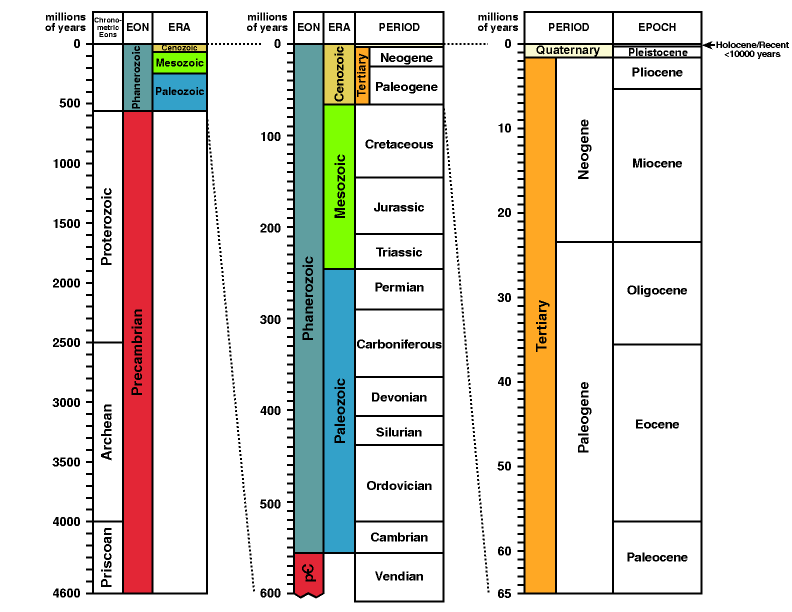 A conventional chart of Earth timescale |
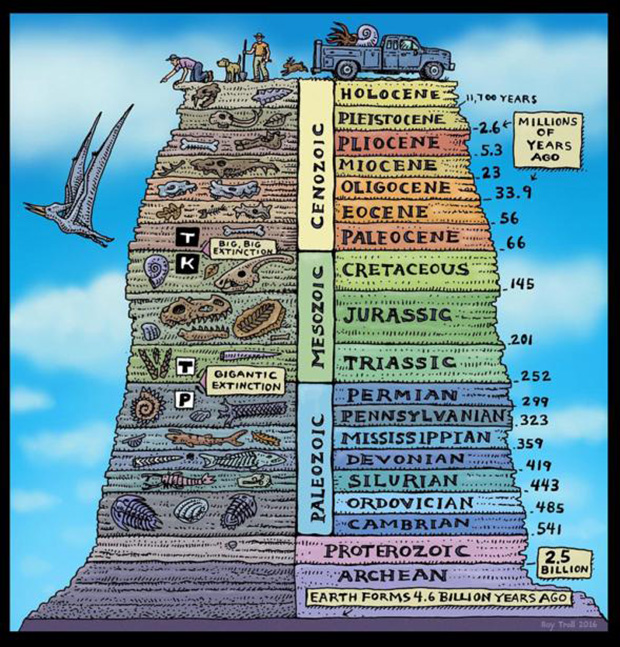 A chart of the Geologic eras |
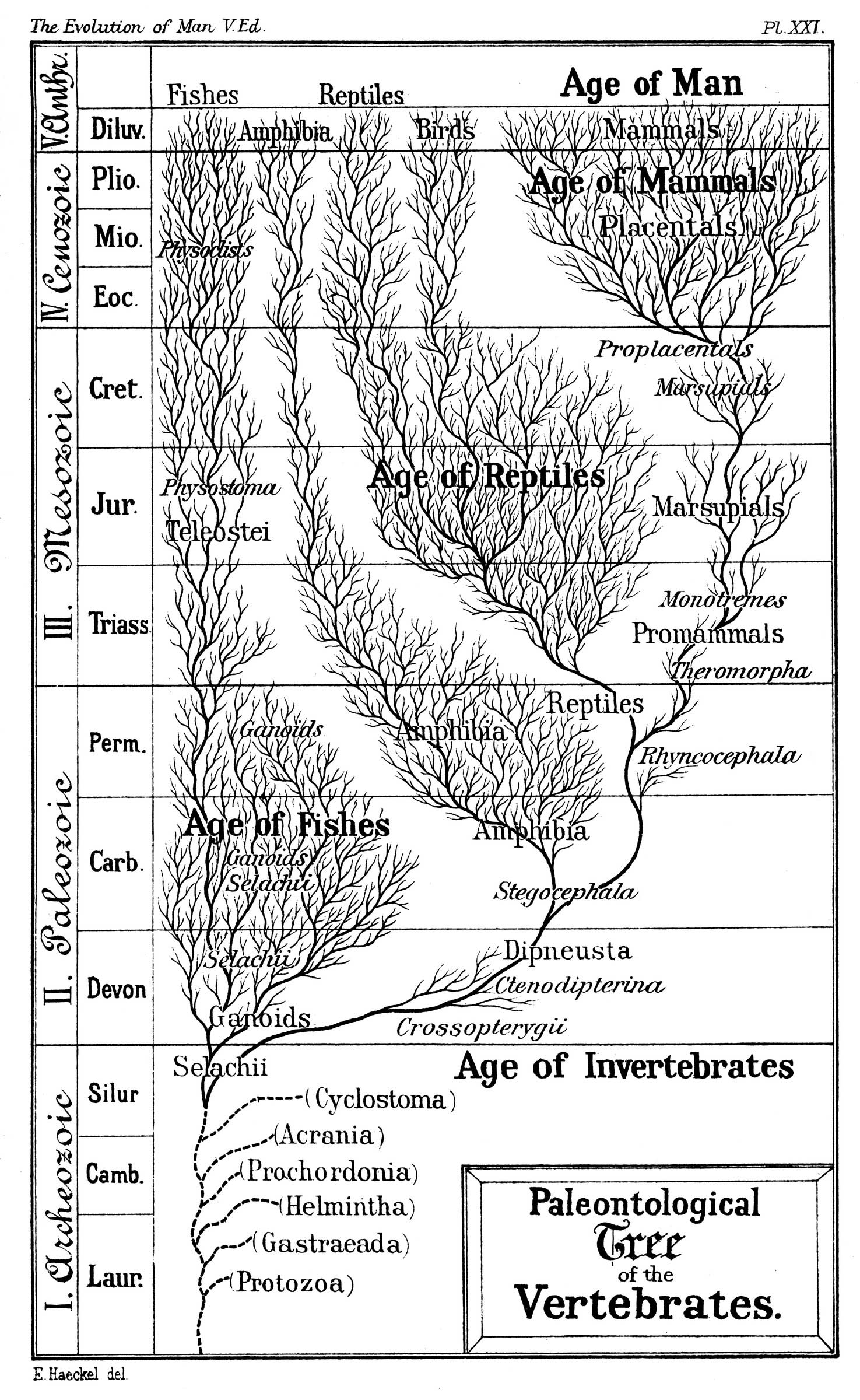 Paleontological tree of the vertebrates (includes humans) |
 Cross Section of the Earth |
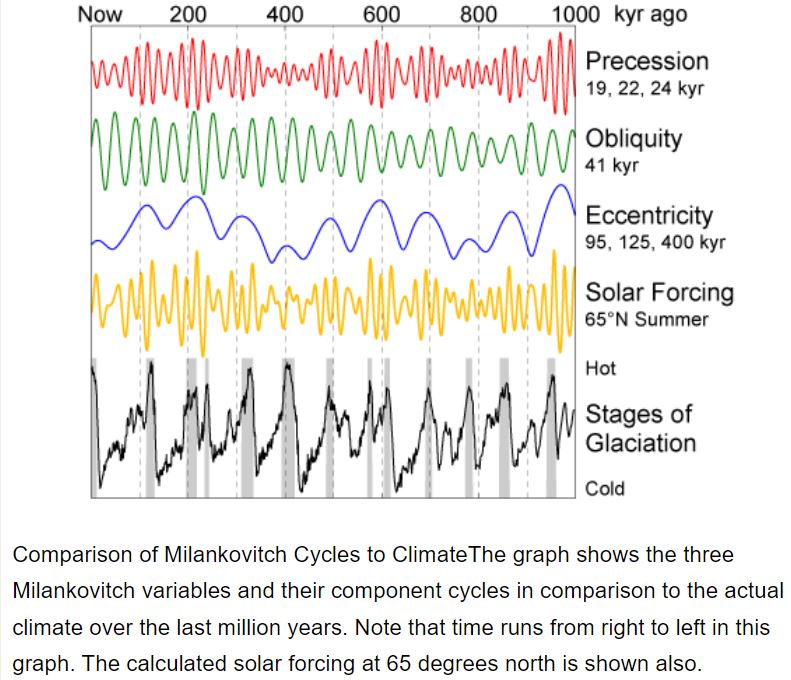 Milankovitch Cycles |
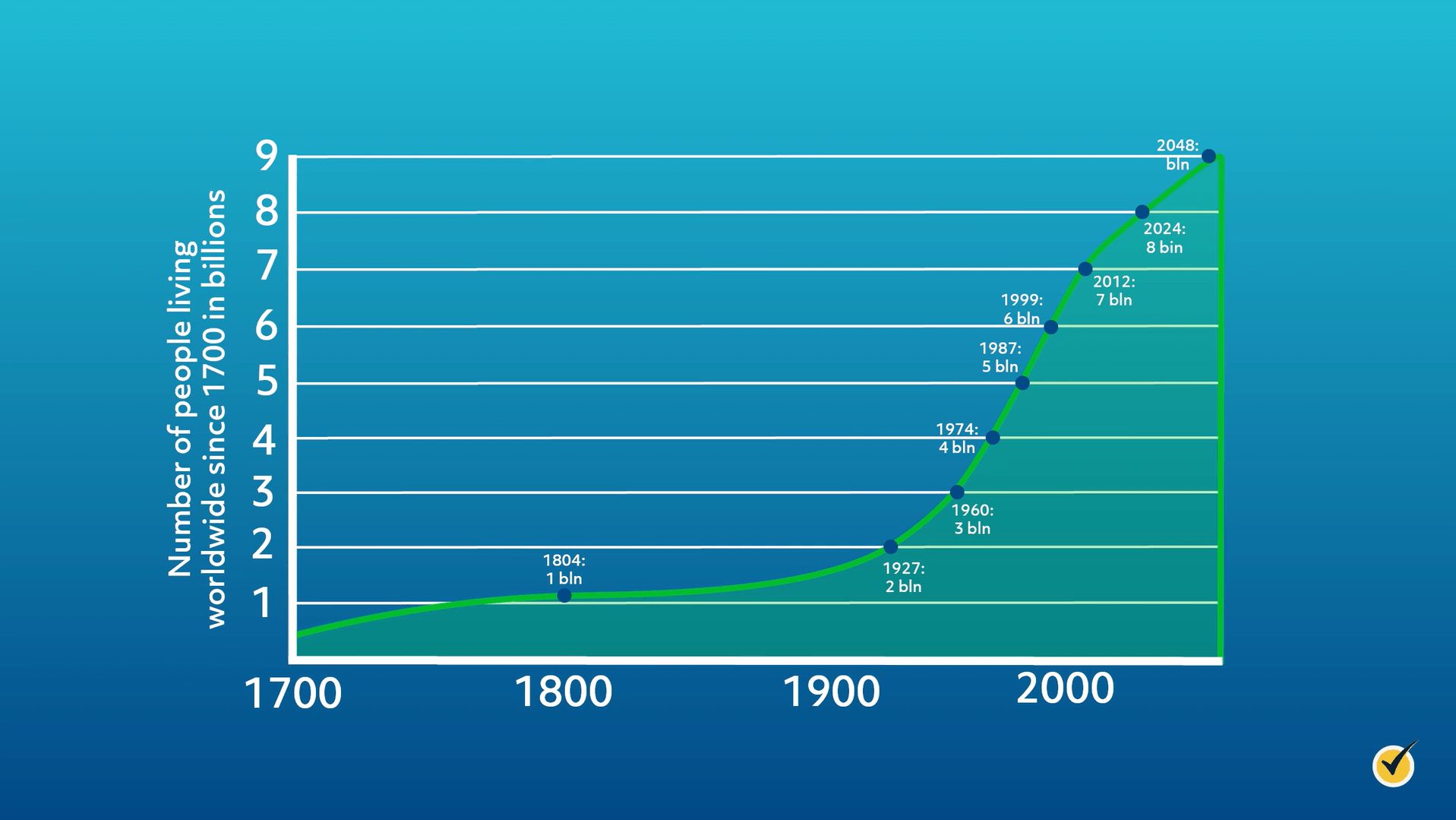 World Population |
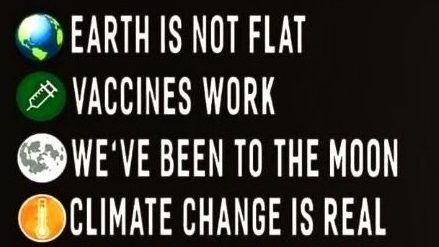

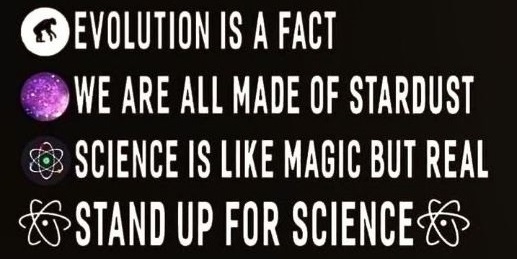
| ||